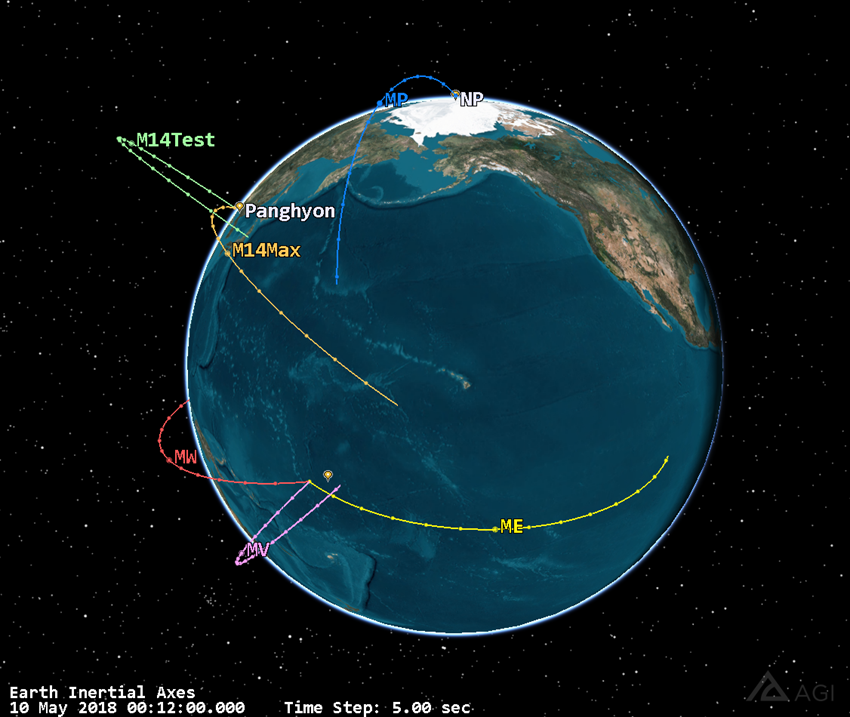EAP Showcase: physics around the (spinning) globe with STK
- Dec 17, 2020
- Blog Post
-
 Systems Tool Kit (STK)
Systems Tool Kit (STK)
Landing a bullseye can be tricky, especially if you have a moving target. Which, since the earth rotates, is pretty much everything! (see our recent blog post, "Modeling the Coriolis Effect is a Breeze with STK") This month, we feature an article by Dr. Philip Blanco of Grossmont College, a partner of AGI's Educational Alliance Program (EAP). Dr. Blanco's article shows how teachers and students can use the free version of STK to demonstrate why NASA launches from the east coast of the U.S., how the Coriolis effect appears in an Earth-fixed reference frame, and more.

Dr. Blanco’s paper, “Modeling ICBM Trajectories Around a Rotating Globe with Systems Tool Kit” is published in The Physics Teacher, a refereed journal of the American Association of Physics Teachers. Starting with the flight characteristics of a North Korean Hwasong-14 ICBM launch, he used STK to calculate where the same missile would have gone had it been launched from different spots on Earth and in different directions. He writes, "STK’s built-in propagation methods and graphics allow the user to focus on exploring the underlying physical principles of motions on and around the Earth.”
In the paper, Dr. Blanco also encourages physics teachers to sign up for the EAP and the StellarXplorers annual high school competition.
The paper itself is behind a paywall, but you can contact Dr. Blanco for a copy at philip.blanco@gcccd.edu. The abstract is freely available, as is a set of open-access supplement files that includes:
- a PDF guide for new teachers to sign up for the EAP
- a movie of the ICBM’s trajectories (which you can also watch here)
- a VDF containing the scenario, which you can open in any version of STK and explore
As the abstract states, “these results illustrate the effects of a rotating Earth on ballistic motion, while demonstrating STK’s utility as a simulation tool for educators and students.”
The EAP allows educators to introduce a new dimension to the classroom by giving students hands-on experience with AGI software. Created in 1996, the program now serves thousands of students at academic institutions worldwide. The EAP provides eligible colleges, universities, military training institutions, high schools, and nonprofit educational groups with licensing of AGI products for instructional use. AGI encourages student use through the EAP and through the high school contest, StellarXplorers. For more information on the EAP, please email education@agi.com.

